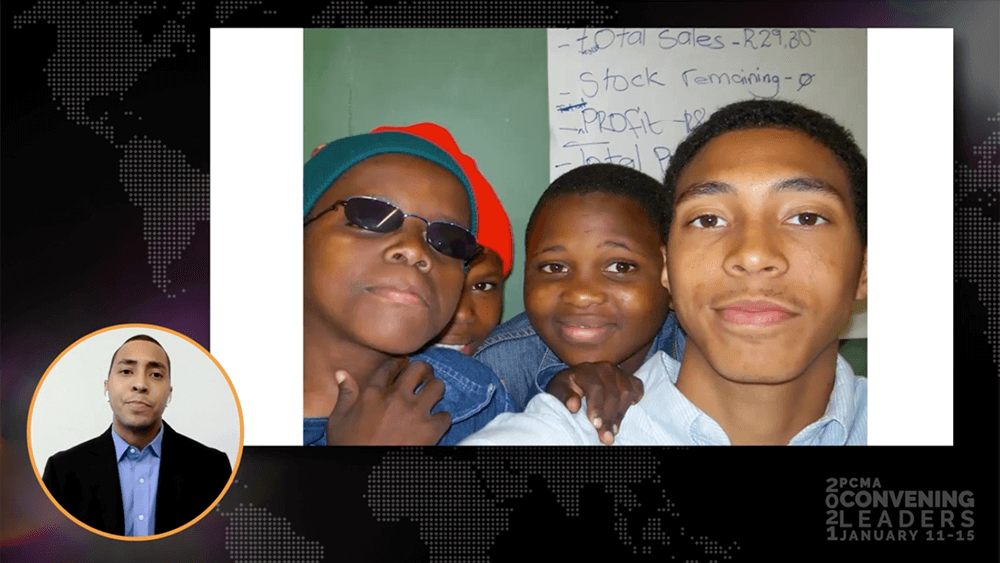
In his Convening Leaders session, Torin Perez shares his personal stories to frame a discussion about diversity, equity, and inclusion.
Torin Perez knows how easy it is to let preexisting perceptions of other people color the way we view them as individuals — and what we miss out on when we limit ourselves in this way. In 2006, Perez spent the summer after his freshman year of college teaching English and working with teen entrepreneurs in South Africa. Meeting people there from all walks of life made Perez realize how off-base his preconceptions of Black people’s lives in Africa had been, largely due to images depicting extreme poverty that were used in fundraising print ads and TV commercials in the U.S. Rather than backing away in discomfort after this eye-opening perspective shift, he later joined the global marketing team at DreamAfrica, a Kenya-based education and storytelling organization now known as DreamGalaxy, to help add complexity and depth to the way Africans are depicted in global media.
Perez, a diversity, equity, and inclusion consultant and author of Who Am I to Lead? The World Is Waiting for You, has made a career out of facilitating interactive learning experiences for forward-thinking companies.
Before starting any dialogue about diversity, it’s key, Perez said, to understand the distinction between racial justice, defined as systematic fair treatment of people of all races that results in equitable opportunities and outcomes for all, and racial equity, the societal condition that would be achieved if a person’s racial identity was no longer a statistically relevant predictor of how well that individual would fare in life. Perez points to Ibram X. Kendi’s book How to Be an Antiracist as an excellent resource for understanding how to combat racism at its core, as well as a good jumping-off point for deeper conversations about inclusion in the workplace and other settings.
A Three-Step Plan
Perez embraces a three-step action plan to help individuals achieve a more grounded perspective on race and society. Step one is moving from a simple “I’m not racist” perspective into the actively uncomfortable struggle of antiracism (“What I say and do about racial inequality, in each moment, determines what — not who — I am.”) In this way, the process of becoming antiracist is a journey of exploration, not a one-time judgment about oneself. The next step is to get comfortable with being uncomfortable by engaging with situations or topics that may trigger a sense of guilt or responsibility or reinforce your own relative privilege compared to others. Embracing this discomfort leads to greater empathy as well as a deeper understanding of structural issues that stand in the way of lasting reforms, he said. The final step, according to Perez, is to declare yourself a leader rather than falling victim to the bystander effect — thinking that someone else will take care of a specific problem or incident of inequality — and that you don’t need to speak up or try to take charge.
This action plan can be undertaken by anyone, but those in the events industry can play an influential role in moving society toward racial equality, Perez said, by striving for diversity among suppliers and event stakeholders as they bring communities together.
Kate Mulcrone is a New York City–based freelance writer.
